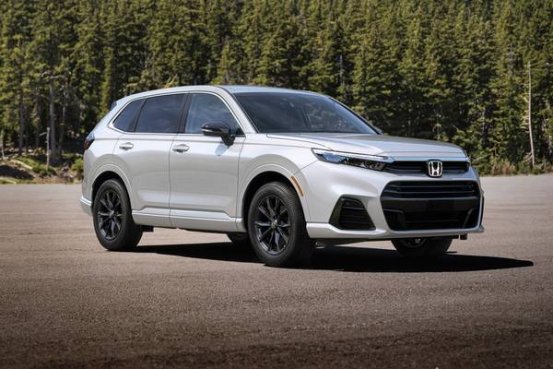The 2025 Honda CR-V continues to lead the compact SUV segment, combining comfort, practicality, and modern technology in a well-rounded package that appeals to a wide range of drivers.

Overview and Design
Now in its sixth generation since 2023, the 2025 CR-V keeps its familiar silhouette while introducing subtle updates that enhance its appeal. The front fascia features a bold grille, sleek body lines, and sharp LED accents, presenting a confident, refined appearance. Inside, upgraded materials and enhanced digital interfaces elevate the cabin. Early owner feedback emphasizes family-friendly features, including ample cabin space, a smooth ride, and an intuitive infotainment system. While praised for its balance and practicality, some drivers note that handling prioritizes comfort over sportiness.
Performance and Powertrain Options
Honda offers two main powertrain choices for the 2025 CR-V. The base 1.5-liter turbocharged four-cylinder delivers around 190 horsepower and 179 lb-ft of torque, paired with a continuously variable transmission (CVT). The hybrid option combines a 2.0-liter engine with dual electric motors, producing roughly 204 horsepower. Front-wheel and all-wheel drive are available across most trims. Reviews indicate the CR-V favors refined, effortless driving, with the hybrid model offering smooth power delivery and responsive handling. Suspension tuning balances comfort and control, even on uneven roads. Towing capacity is 1,500 pounds for the standard models and 1,000 pounds for the hybrid, suitable for light hauling.
Interior, Space, and Comfort
The CR-V cabin impresses with ergonomic design and generous space. Rear passengers enjoy about 39.3 inches of legroom, enhancing comfort on long trips. Cargo capacity remains competitive, offering 39.3 cubic feet behind the rear seats and up to 76.5 cubic feet with seats folded. The dashboard features a horizontal layout with digital gauges (7-inch standard, 9-inch on higher trims) and a central infotainment screen. Premium materials, soft-touch surfaces, and refined finishes contribute to a high-quality interior feel. Seats are comfortable and adjustable, and improved sound insulation enhances highway driving comfort.
Fuel Efficiency and Economy
Fuel economy remains a key strength. The turbocharged engine achieves an estimated 28 mpg city, 34 mpg highway, and 30 mpg combined for FWD models, with slightly lower numbers for AWD. Hybrid variants deliver impressive efficiency, around 43 mpg city, 36 mpg highway, and 40 mpg combined (FWD), with AWD versions achieving roughly 40/34/37 mpg. Real-world performance closely matches EPA estimates, and the hybrid’s brief EV mode in city driving further enhances fuel savings and lowers emissions.
Market Position and Value Retention
The CR-V competes in a crowded compact SUV segment against rivals such as the Toyota RAV4, Mazda CX-5, Hyundai Tucson, and Ford Escape, each with unique strengths. The RAV4 emphasizes hybrid options and strong resale, the CX-5 offers premium interior and engaging driving dynamics, the Tucson highlights advanced tech and warranty coverage, and the Escape provides diverse powertrains and digital features.
SUV Model | Starting MSRP (est.) | Key Strengths | Fuel Economy (combined) |
2025 Honda CR-V | $28,500 – $39,000 | Reliability, interior space, efficiency | 30–40 mpg |
2025 Toyota RAV4 | $28,000 – $42,000 | Powertrain variety, resale value | 30–41 mpg |
2025 Mazda CX-5 | $27,500 – $40,000 | Driving dynamics, upscale interior | 26–28 mpg |
2025 Hyundai Tucson | $27,000 – $38,500 | Warranty, tech features | 29–38 mpg |
2025 Ford Escape | $28,000 – $39,500 | Technology, engine variety | 28–37 mpg |
Honda’s proven reliability contributes to strong resale value for the CR-V. Historically, it depreciates more slowly than many competitors, with projected three-year residuals exceeding 60%. For drivers seeking a dependable, efficient, and comfortable SUV with long-term value, the 2025 CR-V remains a top choice in its segment.
